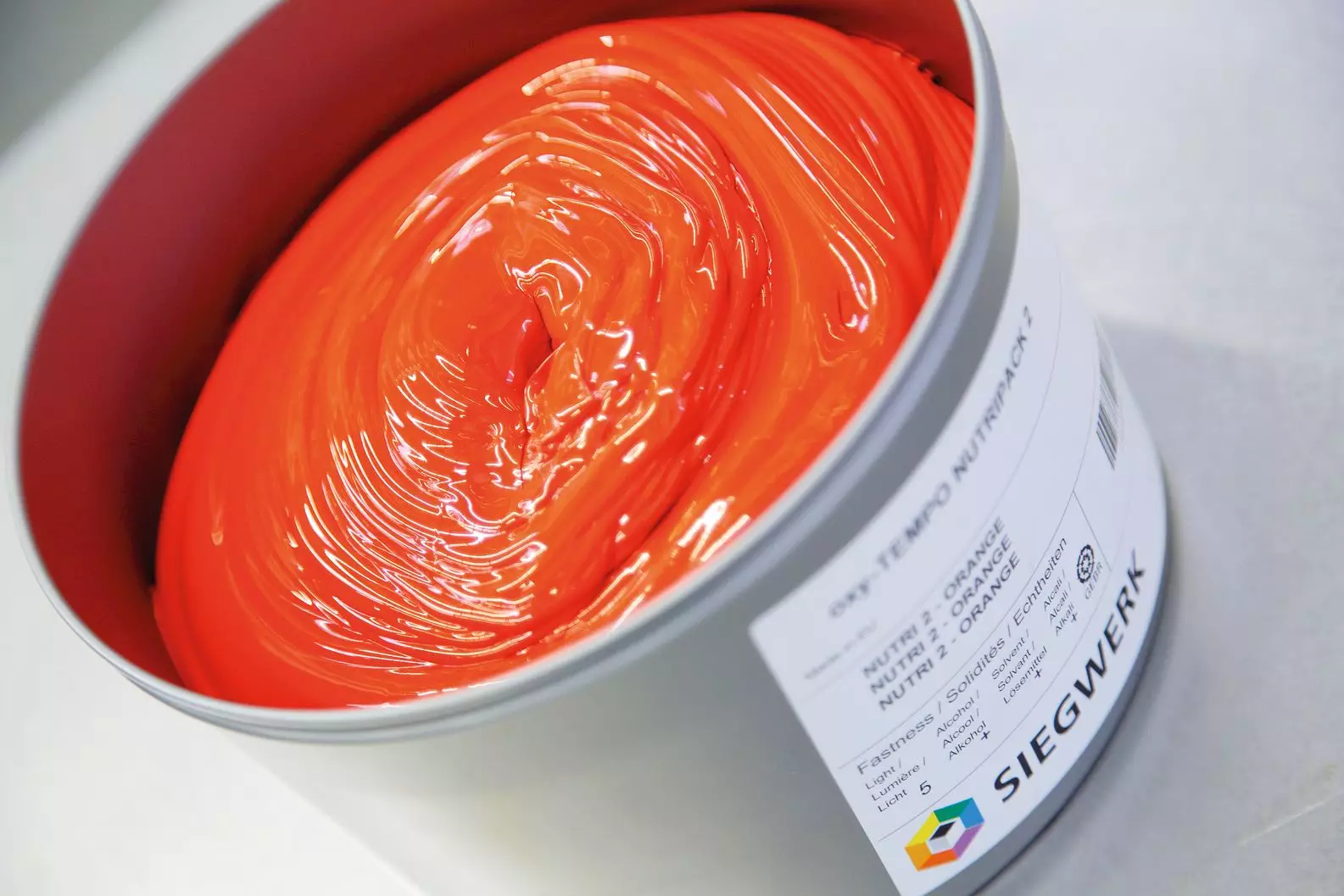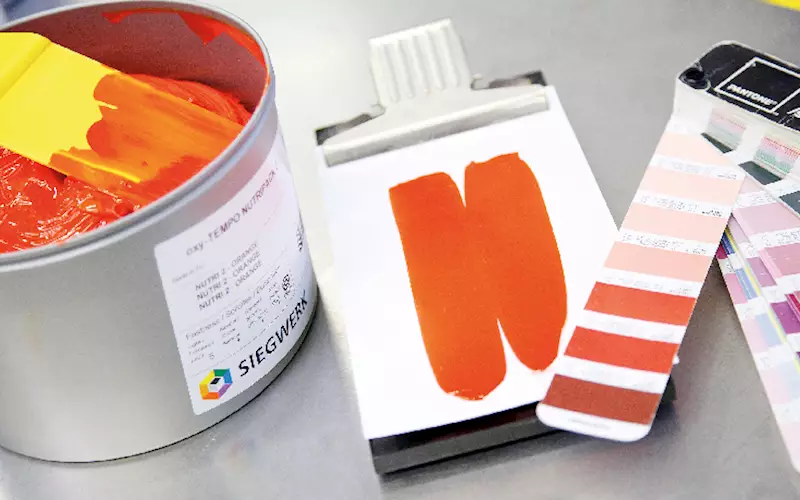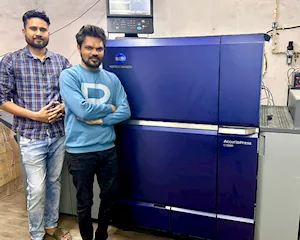Are mineral oil-free inks genuinely safe?
Food safety refers to the conditions and practices that preserve food quality to prevent contamination and food-borne illnesses. Food safety principles need to be adhered to from farm to fork to ensure consumer safety.
03 Dec 2021 | By Jatin Takkar
Food industries have been proactive in the risk assessment of raw materials. However, not much has been risk assessed in the case of packaging material. The food safety risk is comparatively higher for the packaging materials since its suppliers and vendors are not controlled by food authorities, unlike the raw material suppliers. Hence, they have not been linked in the supply chain from the food safety perspective. Brand owners need to collaborate more with their packaging supply chain to assess and mitigate the risks from the packaging material.
The Food Safety and Standards Authority of India has recently revamped their standards on packaging to raise the bar on packaging safety. The onus of food safety still lies with the brand owners who are primarily responsible for their products. FSSAI, in their new regulation on packaging safety, has defined food-grade packaging as something that shall not endanger human health, bring any change in the composition of food and organoleptic characteristics.
Ensuring packaging safety is not that easy as multiple stakeholders in the packaging supply chain contribute to developing a packaging material, such as an ink manufacturer, adhesive manufacturers, substrate manufacturers, printers, etc.
Packaging safety implementation requires all the stakeholders to be aligned to the region's legal requirements and the brand owner requirements (if any). Hence, to ensure packaging safety, it becomes essential that the stakeholders are transparent in their communications to deploy an integrated approach. All the stakeholders in the packaging supply chain need to proactively share necessary information and documents along the entire packaging supply chain that would enable risk and compliance assessments of the final printed article
Concept of safe inks
The words "safe inks" and "food grade inks" are commonly used abbreviations by brand owners when they intend to ask for inks that will not allow the migration of contaminants, which can impact the food safety aspects of their product.
However, in the absence of any standard definition for food-grade inks /safe inks, different misnomers have been introduced for years and are now prevalent in the market. Most common are mineral oil-free Inks, cobalt-free Inks, non-toluene inks (NT inks) etc.
What we need to know is whether these inks are really safe?
To know about this, we need to understand the concept of safe packaging inks or migration optimised inks. Safe Packaging Inks are inks formulated with careful selection of raw materials in accordance with legal requirements of the region, brand owner requirements, and self-commitment from the ink manufacturers.
Ink manufacturers not only need to select the raw materials carefully but also keep themselves updated on changing legal and other requirements, as well as the reclassification of the used raw materials. In addition to that, ink manufacturers also need to validate the migrants for the worst-case calculation and shall share the results transparently with the downstream stakeholders for the risk assessment of the packaging material.
We also need to understand how migration optimised inks are safe over and above so-called mineral oil-free inks like Cobalt free Inks etc. Ink formulations can be categorised into four components – binders, pigments, additives and solvents. Each category is responsible for a specific technical function. Ink at the constituent level can be seen as a mixture of even 60-80 chemicals, categorised into different categories with specific technical functions. However, the substitution of a single substance of concern, such as mineral oils, cobalt driers, Toluene, among the gamut of chemicals, doesn't make inks suitable for food packaging. Hence, all the chemicals used in the formulation of inks need to be risk assessed to ensure that inks intended for the food applications are safe and do not deteriorate the quality and organoleptic characteristics of the food product.
Mineral oil-free Inks- Are they oil-free?
Let us assume you procure mineral oil-free inks from a supplier. In such a case, you only have the assurance that the ink doesn't contain mineral oil as a solvent. However, this doesn't give you any guarantee that the ink doesn't contain other solvents like Toluene, Monochlorobenzene (regulated under IS 15495), heavy metals, formaldehyde ( regulated by few brand owners), CMR (carcinogenic, mutagenic, toxic to reproduction) category chemicals (regulated by self-commitment from ink manufacturer). In totality, mineral oil-free inks do not give you any assurance that the inks are compliant with legal requirements, applicable to brand owner requirements, as well as self-commitments from a responsible ink manufacturer. So, what you think is not what you get.
This means the use of only mineral oil-free inks can have the following results- possible failure against legal requirements (domestic as well as export), possible failure against the brand owner requirements, possible failure against the self-commitments from an ink manufacturer.
It can further lead to consequences such as damaged brand reputation, financial losses, product recall/scandals, media trials, regulatory authority trials, sales loss, and total business loss in extreme cases.

Migration optimised inks – the right way ahead
Migration optimised inks are a set of inks where all raw materials have been carefully selected to minimise the potential to transfer contaminants from inks into the food. These inks go far beyond the legal requirements and ensure full compliance with the EUPIA guidelines amongst the EUPIA GMP. These packaging inks are formulated and manufactured considering many individual and varying parameters relating to substrate, application and end-use.
The main features of the migration optimised inks include- Careful selection of raw materials across the categories – binders, pigments, additives, solvents, compliant with the EUPIA exclusion policy hence excluding the CMR category material, compliant with the legal requirements for the ink manufacturer as prescribed under IS 15495 for primary and secondary packaging.
Other features of the migration optimised ink is that they in principle, comply with the definition of "food grade" as specified under Food Safety and Standard (Packaging) regulations, 2018, are compliant with the high-end brand owner requirements, and are validated through a systematic process to offer safe inks consistently.
The ink is also validated risk assessments available in a statement of composition. It safeguards your domestic and exports business as these solutions are compliant with stringent global regulations.
Having said that, it has to be acknowledged that migration optimised inks need to be supplemented with good manufacturing practices at the converter shop floor and validation of the final printed article to ensure safe packaging for food products.
Needless to say, getting migration optimised inks from a responsible ink supplier and following an integrated approach across the packaging supply chain is most critical for implementing safe packaging.
Jatin Takkar is the head of product safety and regulatory at Siegwerk















 See All
See All